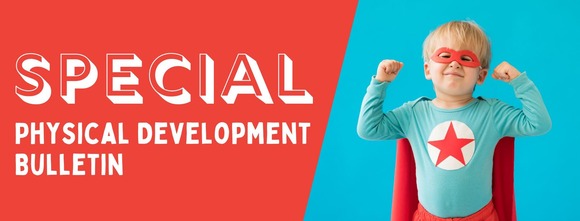 Physical development is both the growth of a child's mind and body from pre-birth, through infancy and into childhood. To ensure good all round development it is important that we provide a range of regular opportunities for both fine and gross motor skills to children in our care from the very youngest babies upwards.
As the weather turns colder and wetter, we still need to ensure there is time spent on physical activity each day including in the outdoor area. So remember to ensure outdoor time is prioritised to increase activity levels and reduce sedentary behaviour. Try to think of imaginative ways to tempt children (and staff) into the great outdoors such as gardening/bulb planting, an autumn leaf hunt, chasing leaves, bark rubbings or splashing in puddles. Daily outdoor time on physical activities can all be supplemented with indoor physical activities to ensure that physical activity targets are met. If you need it there is a reminder of the target guidelines here.
 The early movers website is a collaborative project between Loughborough University, the National centre for sport and exercise medicine (NCSEM) and Loughborough university nursery and has a wealth of resources and activity ideas to help physical development for all ages of children from tummy time through to climbing and log rolling for older children. Why not check out some of their activity ideas here.
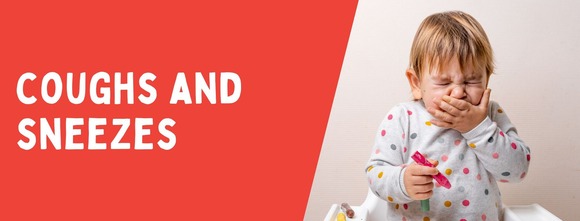 As we are well into cough and cold seasons, now is a good time to review your provision as to how you promote health and self-care - here are some ideas for how to do this:
- Display steps for hand washing signage clearly and refer to it and model the hand-wash sequence.
- Provide tissues at an accessible level close to an enclosed bin – display reminders about hygiene for nose-blowing and coughing.
- Use displays to show the range of foods to be eaten and to identify how different foods help growth and development.
- Grow edible plants such as strawberries, tomatoes, lettuce and potatoes and prepare and eat them in the setting.
- Encourage children to care for their teeth; talk about the things that are good for oral health and the things that people do to encourage their teeth to remain healthy.
- Use puppets to model aspects of health and self-care.
- Encourage children to feel proud of achievements in health and self-care.
 If your children were fascinated by seeing fireworks recently why not build on their interests with some of the following activities?
 |
|
Blow painting fireworks
On black paper, drop a few blobs of paint. Use a straw to blow the paint in different directions to resemble firework bursts - this helps develop the muscles needed for talking as well as talking about colours.
|
|
Glow stick sparklers
Use glow sticks to simulate sparklers - encourage children to move them about - you could try this to music for added fun and also remember to talk about firework safety.
|
|
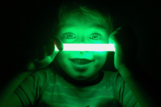 |
 Enjoy being active together
Encourage parents and siblings to join in with their child's active play. Have fun showing them how to do new things like running and hopping. Being active together shows your child that activity is enjoyable. Parents are a role model for their child showing how they stay active themselves try to meet the NHS physical activity guidelines for adults.
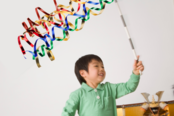
Why not make your own "fireworks"?
Make your own rockets and sparklers - fasten either tinsel, thin strips of bright, shiny fabric or shiny paper onto thin "sticks" (these can be made from actual sticks, garden canes, off cuts of wood, empty kitchen roll tubes, drinking straws or clean brushes) with sticky tape.
Once finished encourage your child to carefully move it around like they were holding a sparkler, making large circling or up and down movements and pretending to be a rocket, crouching down low and then launching themselves off upwards into the air - they won't realise how much exercise they are getting as they are having fun and the craft activity making the fireworks helps them with their fine motor movements and hand eye coordination as well as being ideal opportunities for you to talk about the weather, colour, sizes and shapes and firework safety.
|
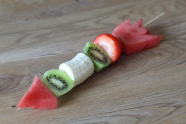
Fruity fireworks
You will need a selection of fruit or vegetables such as grapes, blueberries, strawberries, melon, mango and banana plus either a paper plate and/or kebab stick for each child (younger children may be better with just a plate for safety). Cut the fruit and vegetables into small pieces ensuring one is triangular in shape (for the rocket tip) and another is shaped like flames for the tail (or alternatively you can use some finely cut paper or tinsel lamé for the fuse of the rocket).Younger children can just position these on a plate whilst older toddlers and children can carefully thread them onto a cocktail stick or wooden skewer to make their firework.
|
|